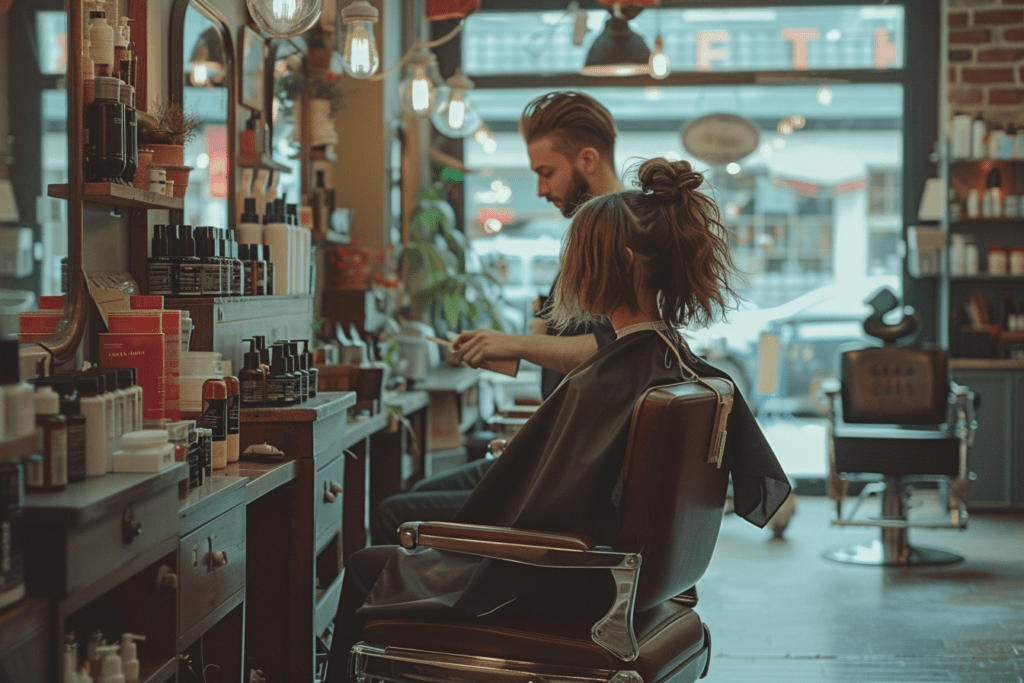A masterpiece needs to be completed just like when you want a perfect hair color, and you know what it should look like, so the reality is hopefully similar.
However, reaching that ideal shade could be complicated by such uninvited visitors as brassy or yellow-orange hues. The character we are talking about here is called hair toner.
Hair toner may seem an uncomplicated product but it enhances the final color making your hair dye spectacular.
Nonetheless, understanding how long the toner should remain on is critical in order to maximize its effectiveness; this factor varies greatly between different hair types:
Bleached or Pre-lightened Hair with High Porosity: Toner can penetrate this type of hair quite fast thus risking over-processing. It’s better if you keep checking after every two minutes to ensure that the toner doesn’t stay for more than seven minutes.
Natural Blondes Without Prior Bleaching: For those fortunate enough to have natural blonde who desire for some enhancement, the maximum time one can leave a toner would be 20 minutes for a deeper and more vibrant tone.
Curly Hair: Curly hair has high porosity therefore not more than 10 minutes of toning will be required otherwise there will excessive absorption of undesired colors and damage will take place.
Brunettes with Pre-lightened Hair: For brunettes who don’t want to go too light but need to add dimension, it’s best to tone in increments of five minutes with a maximum of fifteen (15).
Brunettes Without Prior Lightening: If your base is darker and you want to refine its shade, then set aside twenty (20) minutes for toning once you’ve figured out your porosity level.
Natural Redheads: With redheads’ natural low poroushairs , they need opaque-colored molecules which should be left on for 20 whole minutes.
Fine Hair: This hair type, often more porous, may absorb color more intensely. Opt for a toner formulation one level higher and leave it in for at least 15 minutes.
It is like finding the “secret sauce” that takes good dye jobs into great ones when you master toner.
By adjusting the amount of time that you will allow the toning product to stay on your head according to porosity levels and type of hair you have, it is possible to ensure that the color you visualize becomes your reality instead of going unnoticed or drawing attention with an exclamation saying, “Oh my gosh! … You dyed your hair!”—rather than settle for anything less.
Toning as the Key to Perfect Hair Color

When it comes to achieving perfect hair color, one would not want to ignore toning. From ice blonde shades through rich brunette options all the way down to vibrant reds, understanding how to tone your locks can make or break a look.
The following are a few basics on what to expect during toning so as not be left in doubt as far as having fashionable hair shade is concerned:
Hair Toner Explained
Hair toner is typically forgotten by most people who undergo coloring processes since they believe that once their hair has been colored then nothing needs more attention in order to achieve desired goals.
However, lightened hair might require adjustments like enhancing desirable tones or neutralizing them which should be done through using this kind of product though its use depends on many factors.
Think about it as though it were a car radio tuner responsible for fine tuning audio wavelength—this makes sense because even fine shifts result in big changes just within seconds.
Simple Hints for Successful Hair Toning
1. Be Clear on Expectations: The most important thing is to know what you are looking to achieve. For example, vibrant and vivid tones may require more processing time due to the intensity of color required compared to softer, more natural-looking ones.
2. Take Hair Porosity into Account: The porosity levels of your hair will greatly determine how it absorbs toner. Hair that has high porosity will absorb color quickly and thus might necessitate shorter processing times in order to avoid overtone while low porous hair takes too long in absorbing toner hence needs longer processing periods.
3. Aid the Process: A hooded dryer or a plastic cap can make your cuticle open up enabling the toners absorption inside which makes this method best for even coverage and maximum toning efficiency.
4. Toner Has Its Limitations: It’s important to understand that toner cannot lighten your hair. However, good for adjusting tones when applied after lifting; achieving a lighter shade entirely depends on appropriate bleaching and lifting techniques only.
Toners perform within the range of lightened shades available in your hair thereby refining and perfecting its appearance.
5. Check Your Products: Knowing all about the tone line you are using is essential when applying it properly. Every product is specific in its own way; therefore, comprehending them can enable you forecast better as well as achieve the desired result accordingly.
6. Do Consider Porosity When Toning: Always think about yourself or customer’s hair porosity when it comes to toning. This realization allows brighter blondes without too much whitening; keeping both integrity and target color intact.
Although not a miracle worker, toners are great at putting the final touches on a finished look.To maximize results with toner use these tips together with a basic understanding of what it is and how it works.
This knowledge can help one boost or correct their hair tone with ease so that it could look as close as possible to the ideal outcome.
With this in mind, toners can be a strong ally for your hair care and styling.
3 Different Kinds of Hair Toners
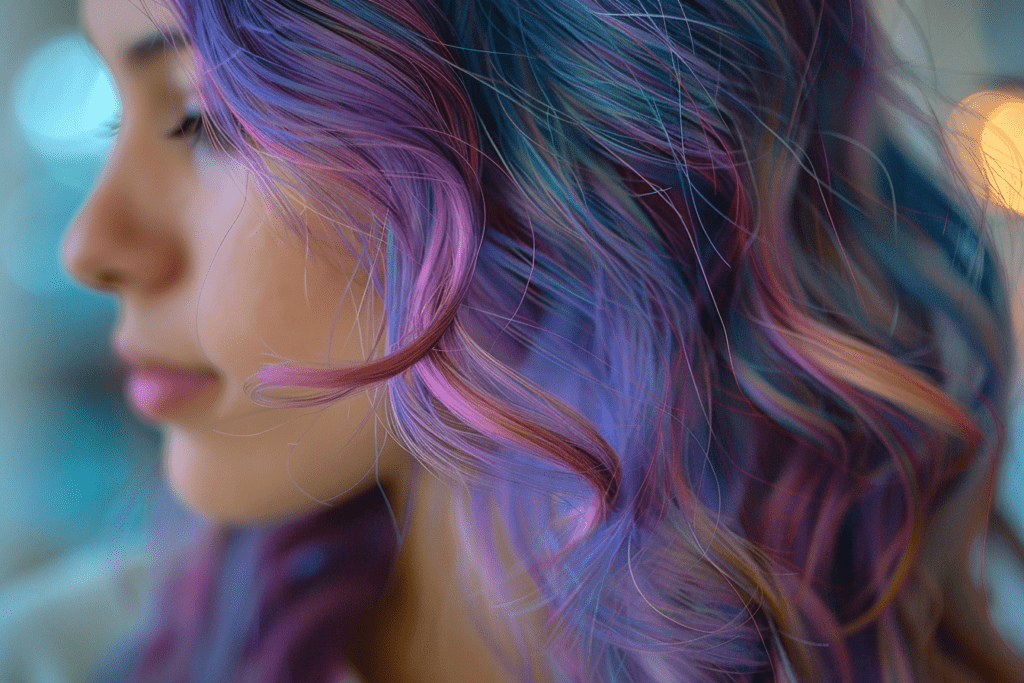
Getting into the maze that’s hair toners is like finding your way to that perfect hair color.
Knowing how each one works among these three types of hair toners will help you decide which one is best for your type of hair and what color results you would like to achieve.
The following overview breaks down these toners by suitability and provides some ideas on how they might be used to achieve your desired hue or style.
Permanent Hair Toner
They are heavyweights in terms of tone changing, making them most suitable for permanent color corrections and working with darker shades.
In many cases, these types contain ammonia or MEA (monoethanolamine); a substitute for ammonia which gives them their permanent ability to alter the natural shade of human hairs. However, they should be handled cautiously because they are quite strong.
Who Should Use It? Permanent toner is great if you have healthy locks and want to make major changes in color.
Moreover, it can work with demi or semi-permanent colors that people prefer layering as they adjust their results at any given moment or preserve them if necessary.
Demi-Permanent Hair Toner
The demi-permanent toner strikes a balance between the permanence of permanent and semi-permanent gentleness.
Typically, it has low ammonia level that enables it to open the hair cuticle for greater color deposit than semi-permanent products but not as strong as those taht result in permanent change.
Who is it for?
This kind of toner is perfect for people who want to try out colors without having to make them permanent or just anyone looking forward to reviving their colors with dark rich deposits.
Provided you follow a hair care regimen suitable for colored tresses, expect the effects to endure about 20-25 washes.
Semi-Permanent Hair Toner
For that subtle color enhancement or gentle touch-up, this type of toner is what you should consider using.
Being the most forgiving among all types of toners, they are liked by many homeowners opting to dye themselves and individuals having thin or fragile hairs.
Semi-permanent types like purple and blue shampoos are designed specifically for retaining vibrancy on your end until next visitation at salon.
Who Is It For?
Surprisingly, these types of hair toners are highly suitable when one only needs either maintaining or slightly altering their current hair color instead of going for permanent changes.
They are also useful tools, which help in prolonging life of salon colour while reducing brassiness in blonde or highlighted hairs.
If you understand these three kinds of hair toners then you can decide rightly which product will work best with your hair as well as your colour targets.
The purpose behind this sentence is to show that there’s always a specific toner meant for your particular situation be it correcting faults made during colouring process, trying new things out or even boosting previous results; all depends on how well a consumer knows everything concerning her/his hair roots!
When Do You Use Toner?
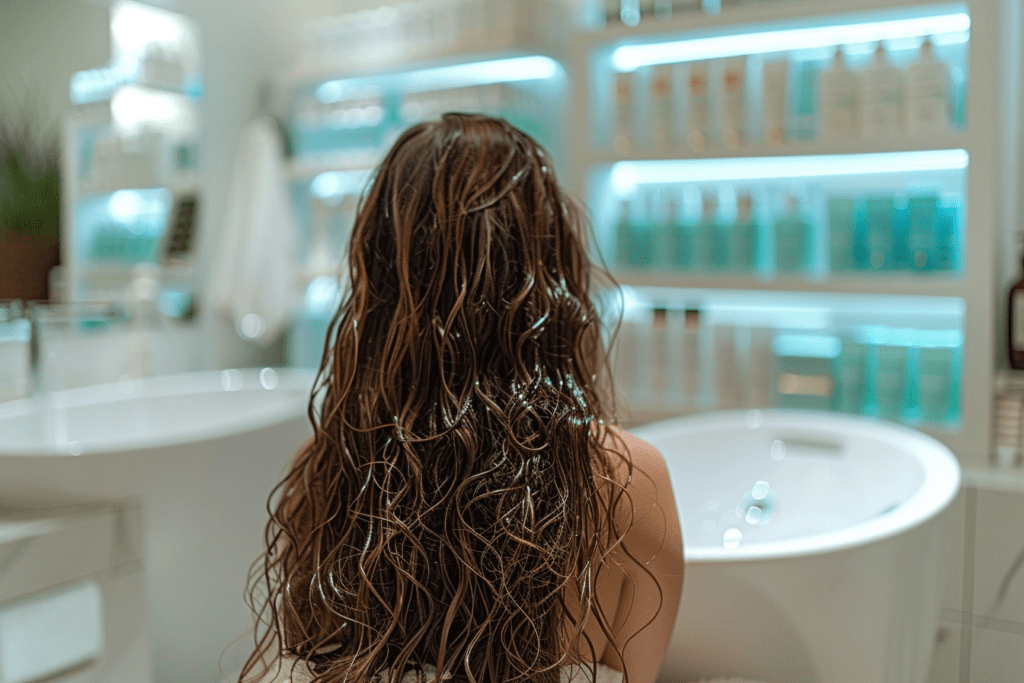
Toning works best if done immediately after bleaching or dyeing your hair.
This timing takes advantage of the fact that the cuticle has been opened by the lightening process so that the toner can penetrate more directly into each strand, leading to brighter, longer lasting results.
Though an excellent agent for tweaking your hair into right shade once it has been lifted, sometimes using them may not be necessary if your hair has already achieved the perfect blonde shade through bleaching alone.
Hair Type Matters
Generally speaking, you need to tone your hair immediately after any bleaching treatment so as to get rid of those unwanted pigments and hues. But for individuals with fine or heavily processed or highly porous locks there are additional precautions that must be taken.
Fine Hair
When dealing with fine strands which refer to individual strand thickness rather than scalp density, one should opt for milder tactics in terms of toning.
The chance of damage is minimized by using semi or demi-permanent colours instead of permanent alternatives such as those which add up on thinning hairs due to some reasons other than age.
Unlike thin hair which means how many hairs are found on one’s skull, fine refers only to width of every fiber.
The latter kind is prone to become over-processed thus proper developer selection and timing during the bleach stage is vital.
Fine Hair Preparation for Toning
Preparing your fine locks for lightening and toning is not something that you do when you notice the split ends, but it should be a continuous process.
Apart from before and during bleaching hair masks and other treatments are recommended to care also after that stage in order to maintain healthy hair which can still remain to be small in size.
For instance, Davines Replumping Conditioner nourishes as it boosts volume which is great for fine hair requiring treatment and having no body at all.
And so if your hairs have never had such products being applied onto them then think about giving them some time before toning can take place after dyeing or bleaching so as to determine whether they will damage due to additional chemical process or not.
Learning when to use toner and how to modify it for your type of hair can completely change your experience with coloring. By observing these instructions, the strength of your scalp’s filamentary structures are not only safeguarded but too the desired coloration results are attained unquestionably.
Highly Processed or Very Porous Hair
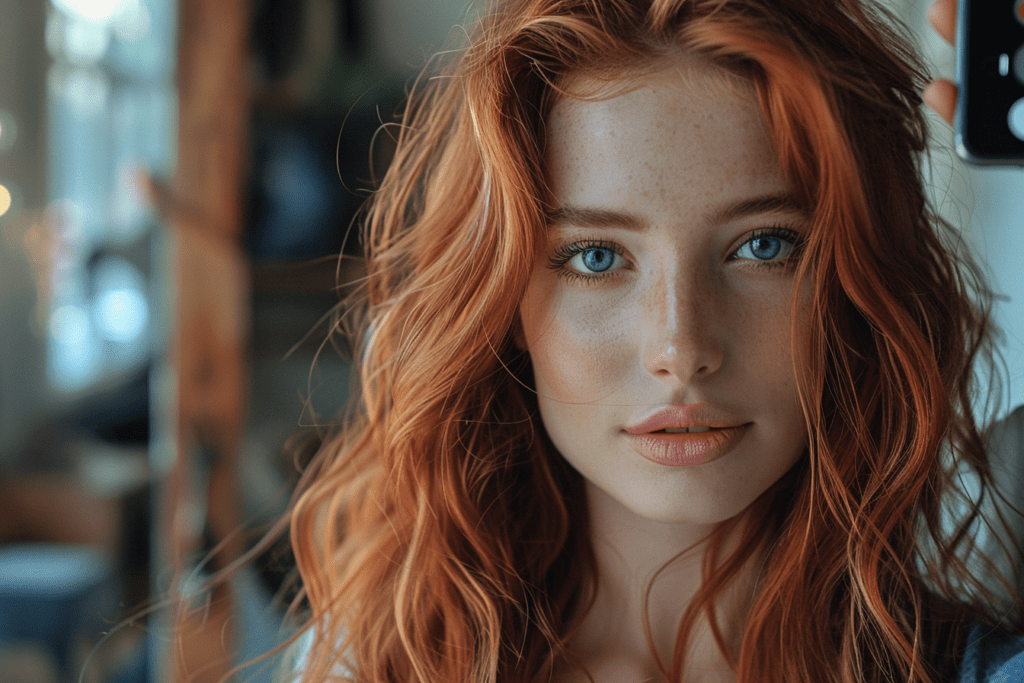
Understanding when and how to apply toner becomes critical for anyone trying to get their perfect shade on highly processed or very porous strands. And thus fragile damaged tresses should not be taken lightly during the application of toners lest this condition is made worse thus complicating further treatment processes.
Detecting Severely Damaged Hair
A number of indicators point out an extremely damaged head like having dull, dry, brittle, frizzy as well as tangled locks. It may feel gummy or sticky, appear thinned out towards the ends, and experience increased shedding. When your strands possess these traits you must be cautious enough before embarking on more chemical treatments.
Pre-Toning Care for Damaged Hair
Prior to thinking about toning, it is wise to bring hair’s natural pH back down into the normal range of 4.5-5.5, and by using an acidic-based conditioner or letting your hair’s natural oils do their work for restoration.
In taking more time between chemical services, there can be great advantage for hair recovery that provides space for targeted treatments that aid in improving the quality of the hair.
To improve hair condition pre-toning, I suggest things like Olaplex Hair Repair Treatment Kit used 2 to 3 times before toning.
Such products have been designed to assist in fixing the hair so that it is able to absorb toner evenly without further damage occurring.
How do you determine Toner Processing Time?
There are various factors that will help you arrive at the ideal processing time for a toner including; health of your hair, current color, your natural type of hair, desired color outcome and type of toner being used (permanent, demi-permanent and semi-permanent).
The following are some tips on how to perfectly time your hair:
Assess Your Hair’s Needs: In view of the inherent qualities found within each kind of hairs, it is important that specific adjustments are made during the process of toning. For instance, if a person has heavily processed tresses they might require less processing time in order not to cause further damage.
Consult With Professionals: It would be good if one can seek help from a professional who deals with damaged strands among other cases on how one may treat his or her own head with due regard to his or her individual locks state.
Monitor Closely: Toner should never stay on your head longer than forty-five minutes because overprocessing causes undesired shades such as dullness/ashiness and even makes more harm on hairs.
Spot Treatment Versus Overall Application: Determine whether all of your hair should be toned or if you only need to tone specific areas. In this case, toner can be applied in one specific area and not affect the whole head.
Getting the perfect hair tone is very similar to conducting an orchestra; every aspect must blend flawlessly.
The knowledge on how to apply hair toner correctly will aid you in either nullifying unwanted brassy hues or enhancing your natural hair color.
Below are three essential guidelines that will help you know when it’s the best time for you to start toning your hair so that it appears beautiful and well-balanced.
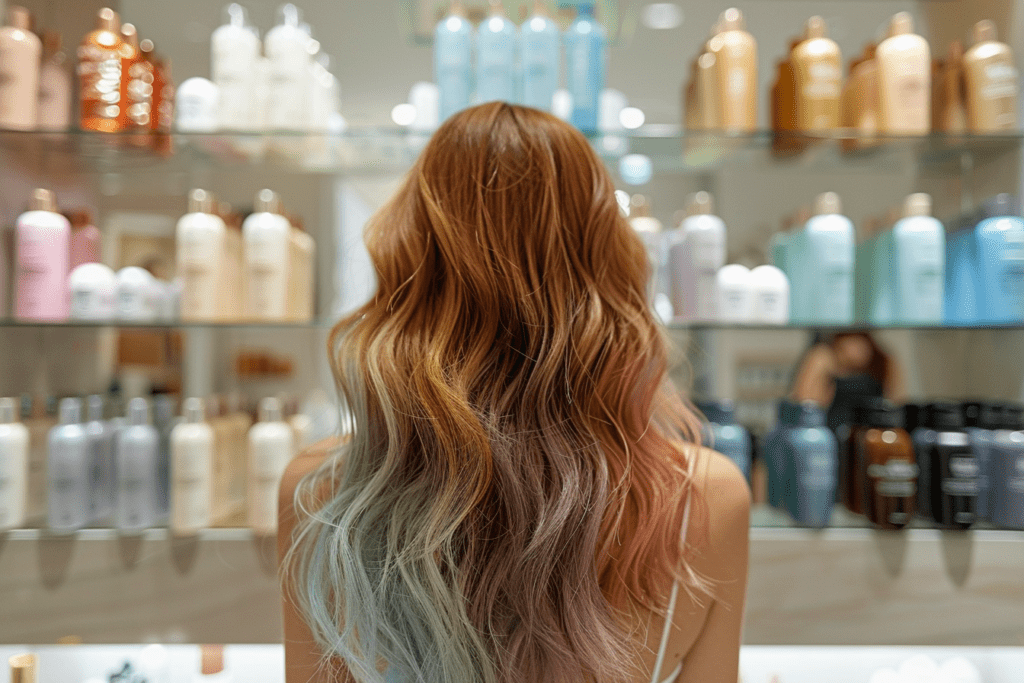
1. Consider Your Hair Color and Level
The starting color of your hair greatly influences the duration within which you require leaving the toner in. If your locks have bright orange tones, then these warm shades will take longer to be neutralized by a toner. On the other hand, correcting some minor yellow undertones may not call for a lot of time during toning.
Color Wheel Application in Toning: “According to Mona who is a professional hairstylist, knowing how colors work together during hair toning is crucial.” Understanding color theory—knowing which colors cancel each other out—is crucial.
For instance, green neutralizes red while blue counteracts orange and violet cancels out yellow shades. This information guides individuals when choosing their preferred blondes since they understand what kind of toners work well for them at any given moment depending on their choice of shade or blonde color painting.
By using a color wheel, one can get rid of unwanted colors effectively making it easier for them to choose the appropriate toner.
2. Assess Your Hair’s Health
This influences how much damage has been done already in bleaching or dying so far as our strands are concerned hence calling for caution when it comes to applying dyes after treatment with such conditioners as shampoo including leave-ins without forgetting heat protectors leading us into approaching undamaged hairs first.
At first, the duration of 5 to 10 minutes is recommended for hair that has been slightly damaged due to a number of reasons such as excessive using of hot tools or harsh chemicals.
Dealing With Severe Damage: If your hair is heavily damaged and breaks easily, you need to postpone toning.
Go for a deep conditioner right after bleaching or coloring and let your hair rest up before applying toner.
Highly porous hair, which is craving moisture, can take in too much pigment and potentially result in unintended color shifts like turning purple.
The best alternative would be to contact expert tone makers in such cases.
3. Always Read the Instructions
Follow the directions on the packaging of your hair toner as provided by the manufacturer’s always important.
These guidelines give specific recommendations on the appropriate developer and processing time that are specifically designed to yield optimum results with minimum damage risk.
Though it may seem easier to replicate seemingly effortless achievements witnessed online, do not forget that every type of hair reacts differently.
When you fail to follow manufacturer’s instructions you are susceptible to many severe consequences such as heavy damage or an unexpected change in color.
To become adept at hair toning, there are some basic rules you must observe: consider your starting color, evaluate its condition and follow instructions of the product being used.
This guarantees healthy shiny hair and helps attain your desired look without causing any harm.
